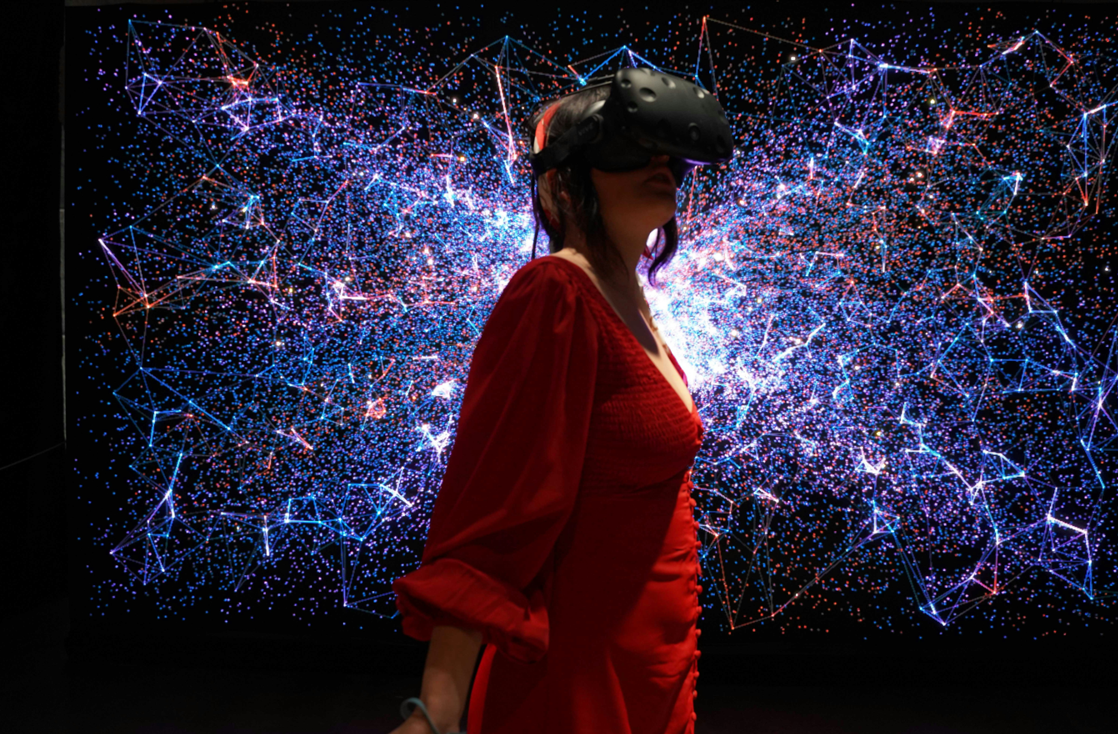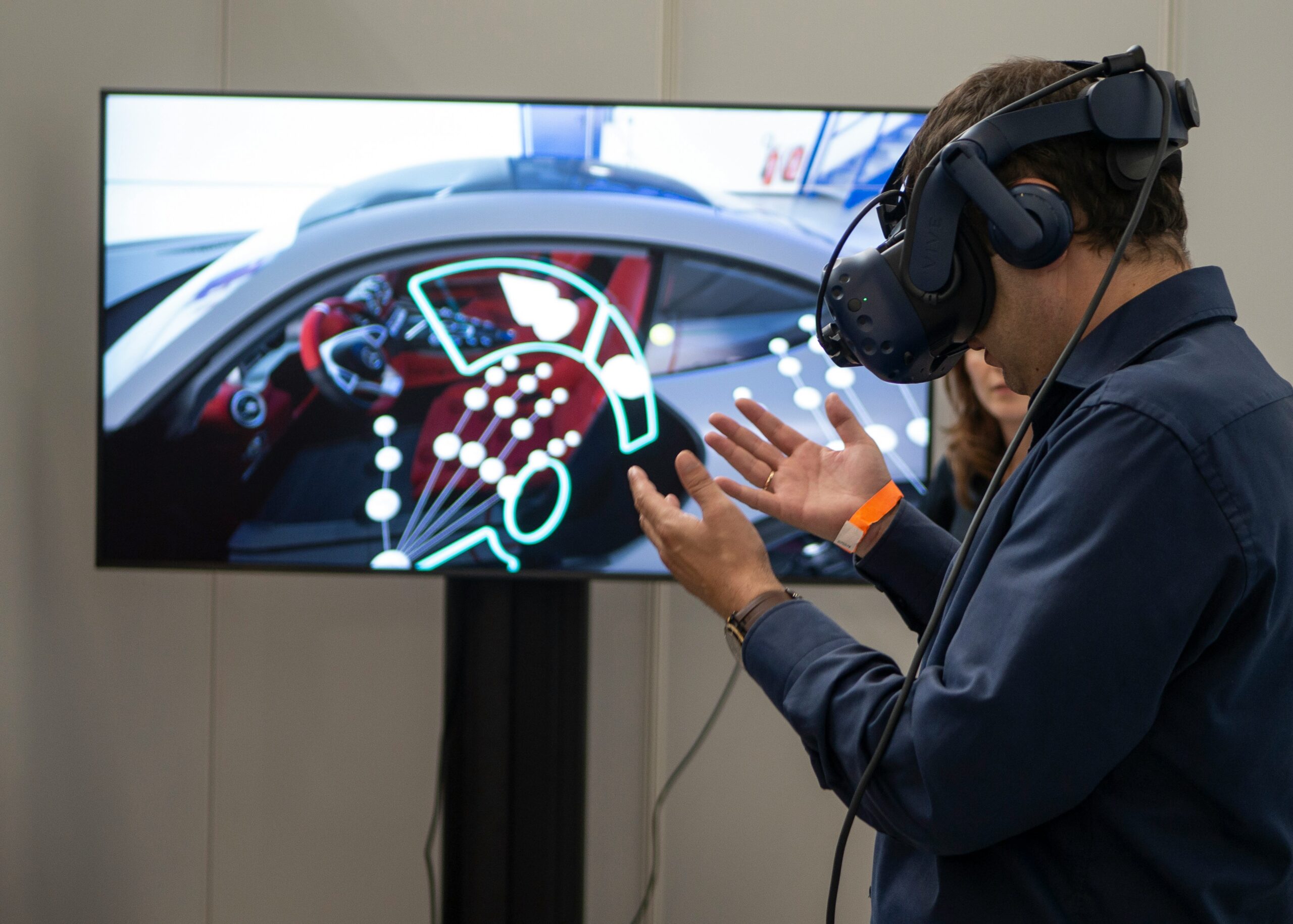AI in VR Training – 10 Ways It Accelerates Learning
Artificial Intelligence is evolving at an unprecedented pace. When combined with Virtual Reality it has the opportunity to take VR learning to a whole new level. Let’s explore how AI can be used to accelerate VR training and how it’s soon becoming a must have across industries.

Using AI for Personalization
By using AI in a simulated environment, it allows for an entirely personalized learning experience. This would be very difficult and time consuming to design otherwise. AI can personalize VR training by adapting scenarios, challenges and content based on different metrics such as individual performance and learning style. So it ensures that users will have a training program that is entirely suited to their own personal needs. This becomes a useful feature especially when it comes to fields where personalized practice environments leads to enhanced learning outcomes and retention such as teacher training or employment skill development.
AI can also generate challenges tailored to an individual’s weaknesses. If a user struggles with a specific task or skill, the system can create an optimized challenge for them to practice and improve. For examples in the medical field, VR is used in training simulations. AI tracks a user’s hand movements and their decision making process and it can dynamically alter the scenario to simulate unexpected complications. A great feature for skill retention.
Adaptive Learning
Adaptive learning ties in perfectly with AI’s personalization opportunities. The adaptive learning frameworks are designed to tailor experiences to the capabilities of the user. They do this by using kinematic, kinetic and physiological measures alongside data such as trainee profiles. AI uses this information to adjust the simulation elements.
Adaptive learning has been used in applications such as the Mondly app, a language learning application. Mondly has a VR version in which users can practice speaking a language in virtual reality by using chatbots and speech recognition. They use AI based voice recognition and analysis to adapt learning experiences and adjust difficulty levels. The interactive features are also a further benefit for learning engagement.
Enhanced Immersion and Interactivity
When using AI in VR applications, the virtual environments become more realistic and engaging. Thus it offers users a more profound sense of presence and interaction.
Machine learning, particularly deep learning, is the most commonly applied AI technique in VR applications. These techniques are used to improve user immersion levels and to optimize the VR design in order to enhance the user experience by adapting to individual preferences and interaction. Also, AI has been used to analyze and integrate emotional cues into VR environments. By doing this, it improves user immersion by creating emotionally aware systems. Techniques such as audio visual analysis and emotion classification models have been employed to detect and integrate collective emotions. It led to a significant increase in user engagement. By providing such near realistic experiences, these applications improve the emotional investment of the users. As such, it has a positive impact on the learning experience.
Real time feedback
AI collects and processes data from every interaction within the VR environment and provides immediate performance insights. These features significantly boost the learning process by providing immediate and also personalized responses to learners’ actions. It allows trainees to quickly understand their mistakes and make improvements right away.
This real time feedback is especially useful in VR applications used in fields such as education, healthcare and sports training. In the field of education and teacher training real time feedback is useful for language acquisition and it enhances pedagogical effectiveness. Meanwhile in healthcare, AI can be used in VR applications for autism therapy. The VR provides the controlled environment for practicing skills while AI personalizes the experience and provides the real time feedback that individuals need. Another example is in paraplegic children’s therapy where AI agents in VR games provide tailored feedback to improve motor skills and overall well being.
Intelligent Error Detection
AI systems can be used to detect prediction errors in VR environments. AI can analyse complex user interactions to pinpoint where mistakes occur during training. Systems can then offer corrective suggestions or alternate practice scenarios to ensure the trainee masters critical skills.
Safety
AI integration in VR training applications is a great tool for improving safety training through knowledge transfer and engagement. This is particularly beneficial in fields such as construction or manufacturing where safety is critical. It offers a a safer and more efficient alternative to traditional training methods. VR is already a great solution for training in high risk industries as it provides a safe environment to practice dangerous tasks without real world risks. The integration of AI can improve this training even further and better the learning experience of people from these industries. It can be a particularly great tool for workers coming from other countries who might face language and literacy barriers. Using AI to address this issue improvise safety knowledge and practices. Also, the AI system can adapt to diverse educational backgrounds and the level of prior experience which makes it effective across a global workforce.
Automated Content Generation
Modern AI technology especially generative AI can be used to automatically create dynamic and personalized VR content. This also includes the generation of environments that are both realistic and interactive and that can adapt to individual learner needs. Thereby it enhances engagement and learning outcomes. In addition, Procedural Content Generation (PCG) methods (which use machine learning and reinforcement learning) are very promising for developing new VR environments and educational content efficiently.
Cost Efficiency and Scalability
AI and particularly machine learning are noted for their high efficiency and precision when applied to VR applications. This efficiency can lead to cost savings by reducing the time and resources needed to develop and maintain VR learning environments
Machine learning is the most commonly applied AI technique in VR. It supports scalability by enabling systems to adapt and improve over time with minimal intervention from a human source. This adaptability is very important for scaling VR learning solutions to accommodate larger numbers of users or more complex educational content.
Intelligent Tutoring Systems
Intelligent tutoring systems can be used in VR learning environments to offer experiences that are both immersive and also emulate realistic work settings. This improves practical skills and knowledge retention and provides students with timely feedback.
These systems often feature tutor agents that provide guidance based on learner actions and progress. It also offers feedback through various modalities such as virtual panels and visual demonstrations.
Natural Language Processing for Voice Interaction
Natural language processing is used in VR more and more to improve voice interaction capabilities. The technology is used to convert voice signals into interactive commands within VR environments. So, it allows users to control VR systems through voice interaction. This integration aims to create more intuitive learning experiences by allowing users to interact with VR systems using natural language commands. It is especially useful in educational applications. It provides a more accessible alternative to traditional interactions to make VR more suitable for diverse groups of users. Also, integrating voice recognition with augmented reality has shown promise in language learning applications, such as teaching English pronunciation to children.

If you’re looking to create your own VR projects for learning and development, Recreate can help! We specialize in designing stunning and immersive 3D spaces tailored to your specific training needs, whether for global employee onboarding, skills development, or workplace simulations. Let us bring your vision to life and transform the way you train!
Check out our reference cases if you would like to learn more about how VR can help with training and development with real life applications!
